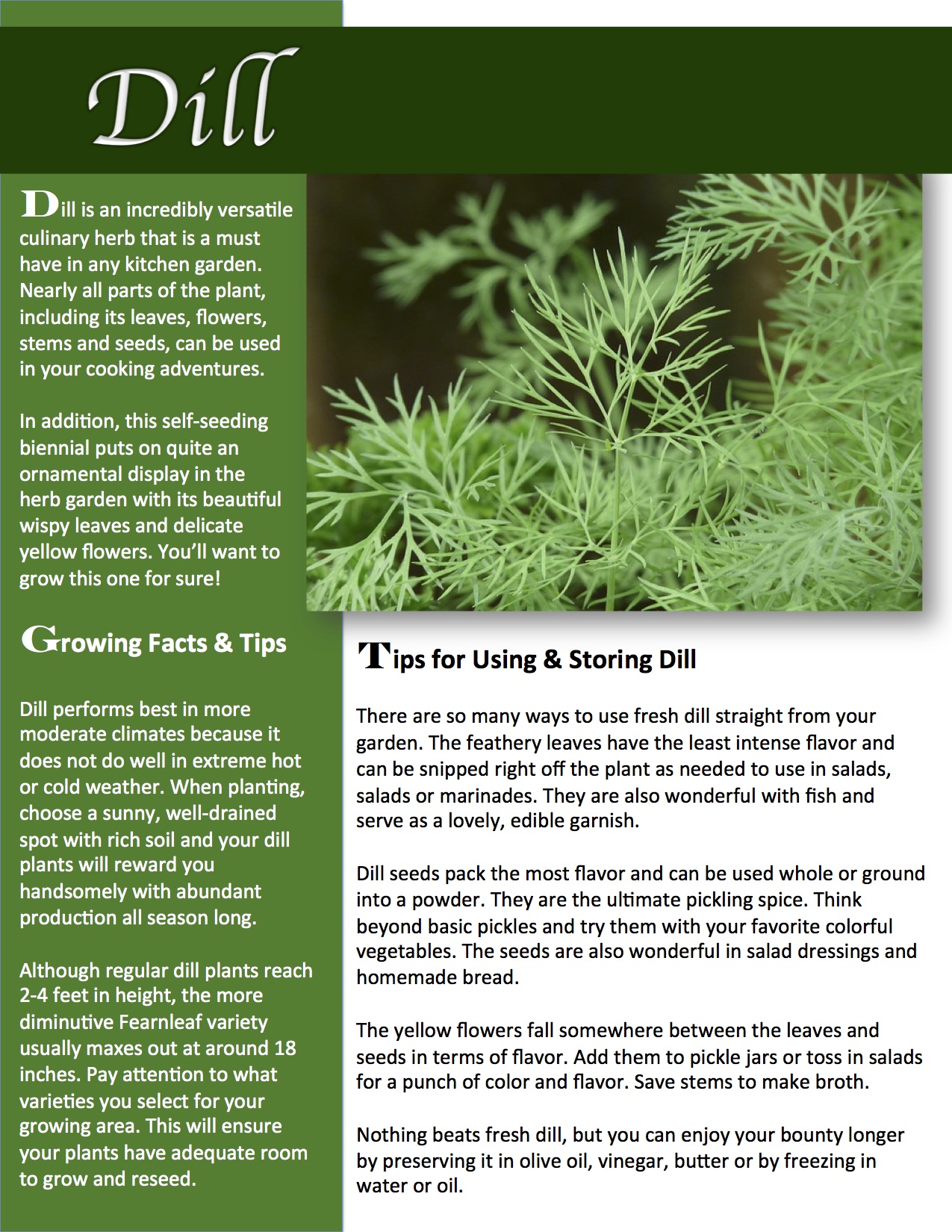
Dill is an incredibly versatile culinary herb that is a must have in any kitchen garden. Nearly all parts of the plant, including its leaves, flowers, stems and seeds, can be used in your cooking adventures.
In addition, this self-seeding biennial puts on quite an ornamental display in the herb garden with its beautiful wispy leaves and delicate yellow flowers. You’ll want to
grow this one for sure!
Growing Facts and Tips
Dill performs best in more moderate climates because it does not do well in extreme hot or cold weather. When planning, choose a sunny, well-drained spot with rich soil and your dill plants will reward you handsomely with abundant production all season long.
Although regular dill plants reach 2-4 feet in height, the more diminutive Fearnleaf variety usually maxes out at around 18 inches. Pay attention to what varieties you select for your growing area. This will ensure your plants have adequate room to grow and reseed.
Tips for Using and Preserving Dill
There are so many ways to use fresh dill straight from your garden. The feathery leaves have the least intense flavor and can be snipped right off the plant as needed to use in salads, dressings or marinades. They are also wonderful with fish and serve as a lovely, edible garnish.
Dill seeds pack the most flavor and can be used whole or ground into a powder. They are the ultimate pickling spice. Think beyond basic pickles and try them with your favorite colourful vegetables. The seeds are also wonderful in salad dressings and homemade bread.
The yellow flowers fall somewhere between the leaves and seeds in terms of flavor. Add them to pickle jars or toss them in salads for a punch of colour and flavour. Save stems to make broth.
Nothing beats fresh dill, but you can enjoy your bounty longer by preserving it in olive oil, vinegar, butter or by freezing it in water or oil.


Leave a Reply